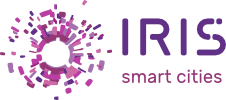
Students from HKU University of the Arts Utrecht in Utrecht University have been working to find out – using design thinking to engage residents and attempt to develop collective solutions. In addition to hosting three workshops on urban design in Utrecht, students spoke to local authorities, companies and more at the Smart City Expo in Barcelona to shape their views before producing a publication Citizen Engagement in Public Spaces – Designing with Co-Creation. IRIS spoke to students and lecturers at HKU to find out more:
“As part of our aim to bring some fresh perspectives on citizen engagement, we went to the Smart City Expo with seven students, from seven different backgrounds” explained Ina van der Brug, head of the HKU Innovation Studio, who has been working with design thinking, gaming, interaction and technology for over 20 years and oversaw their pamphlet “Citizen Engagement in Public Spaces – Designing with Co-Creation”.
For fellow lecturer Dimme van der Hout, this diversity of backgrounds and approaches was deliberate and productive when approaching the topic of citizen engagement: “They influence each other, so you have cross-pollination. It’s interesting to see the designers coming with a certain perspective on how to approach the topic, and the more academic students take a different approach. They confuse each other, but they also bring an entirely new dynamic through working together.”
“Over a couple of days on the exhibition, we asked them to speak with a range of stakeholders and reflect on how, when and why citizen engagement is used” Ina continued. So what was their verdict? “Well, in brief I think the students were a bit taken a back – in a positive way – about how many people speak about citizen engagement, but somewhat unsure about the execution. You should speak to them yourselves though of course,” she added with a smile. And so we did just that…
Developing on Ina’s introduction, communication and design student Bram van Vulpen spoke to dozens of people on stands and the exhibition floor and was impressed about how present citizen engagement was. “They all agree it is important; but when you go further and we asked them to explain it, they don’t really seem to go further… elaborate on what they did and what changed as a consequence”.
Walking round the expo with him was fellow student Ali Dogan, who shared some concerns with Bram about the focus on data collection. “A lot of companies prioritise gathering and analysing data, trying to find uses for it; but seem to overlook understanding the real needs of their target audiences” he said. “It’s interesting, but also a bit scary about how much data a lot of companies here on the expo collect” he added, “including facial recognition and tracing in some cases, which makes me want to stop and think, ‘Is this something we want to move towards?’”
“Working in user experience (UX), we always start with the user and work backwards,” added Kim, UX Designer. “It felt like a lot of people we spoke with we focused on their own product and innovation first – and trying to match it with an application, need or audience second…’
As a student in the built environment, Anouk Braham had an interesting, broad take on the value of citizen engagement. “It’s very important for us to understand what people like, how they respond to their environments, because they have to live there. We want to create a space that is constructive for communities, including how they interact and behave” she said alluding to potential reductions in anti-social behavior and better disposition to behavior change in issues like energy use by deploying co-creation in design.
Also observing potentially wide-ranging implications was Integrated Security Management student, Maarten. “Safety and security is as much about creating a liveable city as it is about safety and security… so you need to know what that contains and how we can make a healthier, more pleasant urban environment,” he said.
So was there any notable differences or positives, we asked. Maarten replied, “We saw both sides: were people were not doing anything at all; but we also saw massive investments in crowd sourcing or ideas. We also noticed a cultural difference, with North Americans working to identify and empower figure heads or ambassadors in the community, whereas in Europe, the style seemed to be a more collective exercise”.
Citizen Engagement in Public Spaces – Designing with Co-Creation
Back in Utrecht, this next generation of city leaders worked to put their own words into practice as well, applying citizen engagement processes to a new design for smart streetlights in the Utrecht neighbourhood Kanaleneiland- Zuid.
You can see how they aimed to build community interest and design an initiative in which the residents have a leading role. Their production includes practical takeaways and advice for each stage of the process.
Be sure to take a moment to dive in.
Further Reading
HKU and IRIS Smart Cities partners have also worked to assess citizen requirements and a framework for co-creating and citizen engagement. A public deliverable details a complete citizen engagement ladder for each of the IRIS lighthouse cities.
16 Apr 2019

